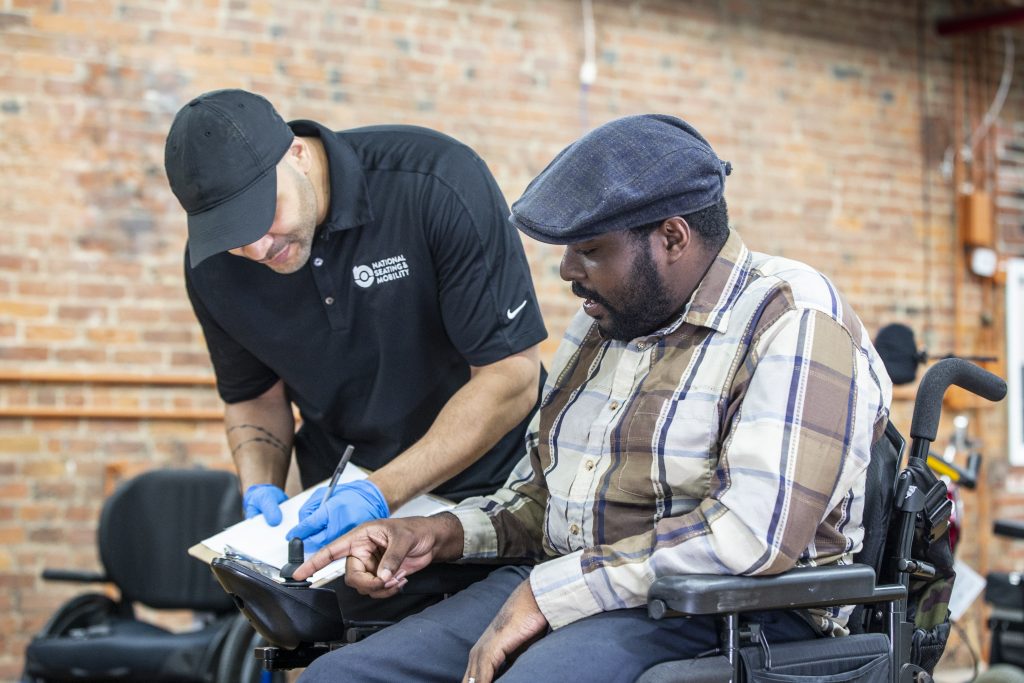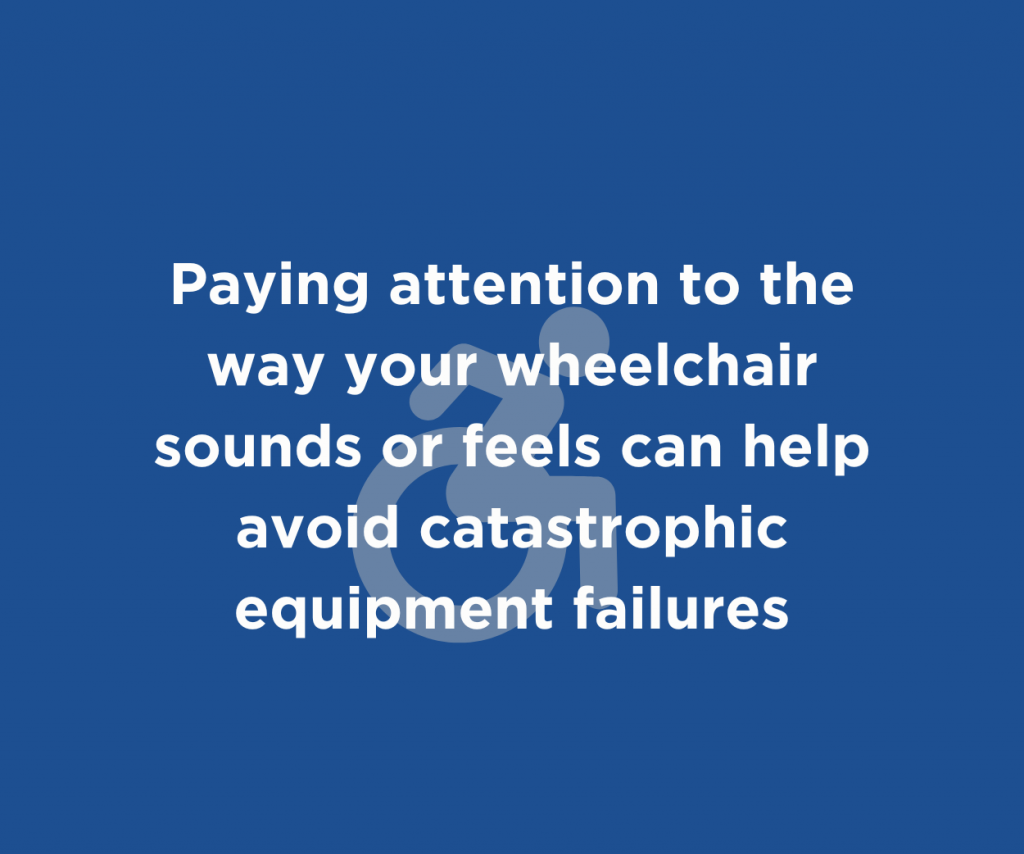5 Signs Your Complex Rehabilitation Technology (CRT) Equipment Might Need a Tune Up
Paying attention to the way your wheelchair sounds or feels can help avoid catastrophic equipment failures

Your mobility equipment is the way you move through the world—and your work, school and social life depend on your equipment working correctly. But, like any equipment used on a daily basis, your wheelchair or other mobility equipment needs regular maintenance to ensure it stays in top working order.
Most of the time, catastrophic equipment failures don’t just happen. There are usually signs your CRT equipment needs attention and recognizing them means you can get the appropriate service needed before significant damage is done. Let’s consider a few of the top signs your CRT equipment might be ready for a tune-up.
1. It hasn’t been serviced in a while.
If it’s been more than a year since you had your CRT equipment evaluated, there’s a good chance it needs some attention. The level of wear and tear depends on your lifestyle, but daily use can result in loose bolts, casters that need to be cleaned and other adjustments that need to be made to your wheelchair on a regular basis.
2. Your chair is suddenly hard to maneuver.
Whether you use a manual or power chair, if it suddenly becomes difficult to push or maneuver, it’s time to set up an appointment with your equipment supplier to have it checked out. Resistance, stiffness or jerky motions in power or manual wheelchairs can all suggest issues that need to be taken care of sooner rather than later.
3. Your chair starts making a new or unusual noise.
Noticing a squeak, rattle, grinding, or clicking noise? These sounds could indicate loose components, dirty casters, or worn-out parts that need repair. A registered technician can diagnose the problem and recommend needed maintenance to keep your chair in working order.
4. Your chair’s battery isn’t holding its charge as long.
If you use a power chair and start to notice decreased battery life, it’s time for an evaluation. Over time, batteries lose their ability to hold a full charge, so this could indicate normal wear and tear, but could also point to a faulty charger, inadequate charging habits, electrical issues or other factors that affect battery life. Talking with a technician about your lifestyle and needs can help highlight specific causes and allows the technician to test the battery and electrical system to ensure everything works properly.
5. You notice visible wear and tear or feel extreme discomfort.
Because you use your CRT equipment on a daily basis, wear and tear is normal, but you need to keep an eye out for worn or deflated tires, dirty or worn casters or any changes to your equipment that cause discomfort or instability. If you notice loose bolts, squeaky wheels, or worn-out casters, contact your CRT provider and they can evaluate your chair to determine if anything needs to be replaced or repaired.
You’re the first to notice changes in your CRT equipment. If you detect any of these issues, set up an appointment with your wheelchair provider.
If you already work with National Seating & Mobility (NSM) or are looking for a new CRT provider, contact your local NSM branch to set up an appointment to evaluate your equipment. In some cases, a remote evaluation may be possible to help diagnose the problem.
Click here to schedule an appointment with your local NSM Branch!
Take Action
Contact lawmakers to discuss the importance of preventive maintenance for CRT users. Simply share your story!
Looking for a few small maintenance tasks you can perform to help extend the life of your chair? Read this article.
While research has shown that preventive maintenance can play a vital role in preventing catastrophic failures, most insurance providers do not currently cover it. NSM and other industry advocates are supporting research and proposing legislation to make the case for preventive maintenance coverage, and several states are considering legislation that would provide coverage for preventive maintenance.
Follow advocacy organizations like NCART, iNRRTS, AAHomecare and other advocates to stay up-to-date about ongoing efforts and learn what is happening in your state.
Related Articles
5 Signs Your Complex Rehabilitation Technology (CRT) Equipment Might Need a Tune Up
Paying attention to the way your wheelchair sounds or feels can help avoid catastrophic equipment failures Your mobility equipment is the way you move through…
Tips to Make Your First Year Easier
Advice from students and college administrators to help make the transition to college a little easier for CRT users At most colleges and universities, the…
A Breath of Fresh Air
Navigating the Transition from High School to College for Wheelchair Users and Their Parents Just a few weeks into his freshman year of college, Alex…


